The main dimensions of the boar tile
Boar is a rectangular ceramic tile resembling a brick. Initially, it served as a cladding of buildings, then migrated to the walls of the subway, which is why it is called the "metro" in the United States and Great Britain.
The wild boar has three main sizes:
- small 7.5x10 cm;
- large 10x20 (10x30) cm;
- large 28.5x8.5 cm.
Because a large tile visually reduces small kitchens, they use a standard size of 10x20 cm. In spacious rooms, any product is suitable.
Types of Boar Tiles
A distinctive feature of the hog are chamfers - beveled edges running along the perimeter.
Beveled
Chamfers (or facets) add volume to the product. The glazed surface looks especially impressive with them.
On the picture chocolate cuisinelined with convex tiles with facets.
Without chamfer
Flat products without bevels look concise and are used if the space does not want to be overloaded with relief textures.
Tile apron color
Since the demand for wild boar is great, manufacturers produce ever new types of tiles using the entire color palette, and also play with textures, imitating natural materials.
White
This color has always remained popular due to its versatility. Perfectly in harmony with any shade, does not attract much attention, adding "air".
In the photo there is a kitchen with a white apron, originally located on the bottom of the wall.
The black
The deep black color of the apron is a bold and incredibly stylish way to highlight a workspace. The dark wild boar looks luxurious, but has a slight minus: on its glossy surface any dirt is clearly visible.
In the photo there is a youth kitchen, in which not only an apron is trimmed with a boar, but also a wall above the doorway.
Blue
Tiles of heavenly or dark blue color look original and give the interior freshness.
Beige
A neutral apron fits well in the kitchen pastel (milk, blue) tones. Sometimes it serves as a backdrop for bright elements of the decor.
Gray
Another universal color of the apron, which is suitable for both light and dark fronts kitchen set.
Color
Color gives the kitchen a special character. A multi-colored apron will allow you to create a unique interior. And red will attract attention and create an atmosphere of hospitality.
Orange
If the kitchen does not have enough light and comfort, the use of an orange apron will be a wonderful solution.
Yellow
The sunny yellow color of the apron adds cheerfulness to the interior or serves as a bright accent.
Green
Olive, pistachio, mint, lime - shades of green in the interior of the kitchen give a feeling of calm and natural harmony, increase mood.
The photo shows a kitchen with natural motifs. An olive apron with a border harmonizes with the natural textures of the countertop and cupboards: marble and wood.
Lilac
Such a shade for boar tiles is rarely used. Lilac color gives the kitchen not only tenderness, but also uniqueness.
Apron design
Kitchen apronlaid out by a boar can stretch along the corner or occupy the entire wall. Depending on the area allocated for it, various types of coatings and additional decor are selected.
If the headset covers the entire wall, it is recommended to use glazed products. The glossy finish effectively reflects light, visually expanding the space.
Matted wild boar is less common. It is used in interiors where gloss is stylistically inappropriate, or in kitchens with an abundance of shiny surfaces.
On the photo black kitchen, the glossy apron of which favorably is highlighted by the built-in lamps.
Boar easily combines with other tiles, for example, when you need to highlight the area between the stove and the hood. Mosaic looks harmoniousinscribed in an apron with a thin stripe.
In the photo there is a small kitchen, the decoration of which is an apron of emerald shades and tiles with a pattern in the zone of the stove.
You can also combine different colors and layouts.
Photo tiles with a pattern
There are products, like regular tiles, imitating natural textures: marble, brick.
Wild boar with ornaments, patterns or inscriptions is often found in scandinavian style or provence.
What grout to choose for tiles on an apron?
First of all, it is worth considering its composition: for the kitchen, a grout based on epoxy resins that is resistant to pollution is best suited. If we talk about the palette, then for a solid neutral apron, it is recommended to choose grout similar in color to the tile itself. Universal are white and gray grout.
In the photo an apron of burgundy color with a grout in tone that "dissolves" the seams without focusing on them.
If the apron needs to be accented, contrast combinations can be used. For example, a black grout on a white tile will give the interior a graphic look. If the tile is dark, white seams accentuate the texture or an interesting shade.
The photo shows an example of contrast grout. Without it, the wall above the work area would look empty and unfinished.
Layout options for wild boar tiles
If you use plastic panels that simulate the boar, there will be only two options for facing: vertical and horizontal. But the rectangular shape of the individual elements of the tile allows you to lay it in several ways:
- Vertical with offset. A method by which you can visually lengthen a tile wall.
- Horizontal swing. The most common option when the tile is laid with an offset, like a brick.
- Horizontal stacked. Accurate seam-to-seam method with emphasis on geometric accuracy.
- Vertical Stack. A method designed to emphasize the severity of lines in the interior.
- Diagonally.Elements are placed at an angle of 45 °. This option is suitable for small kitchens, as it visually expands the area of the apron.
- Herringbone. The tile is laid in a zigzag and makes up a beautiful pattern.
The photo shows a black vertical hog, adding respectability to the interior.
What does a boar apron look like in various interior styles?
The boar tile is so multifunctional that it fits into any interior.
Provence ("French country") combines rustic simplicity and sophistication. An apron can have a picture or, conversely, act as a backdrop for cozy little things and an old headset.
IN spacious loft with rough textures white tiles will fit in, which will serve as a contrast to industrial furniture. An interesting option is when an even glossy coating of the apron resonates with textured brickwork.
Due to its laconic form, the hog will harmoniously fit into both modern and Scandinavian style of cuisine.
In the photo there is a kitchen in a modern direction with tile, laid "herringbone".
IN classic style The beige hog will find its application, shading the splendor of a luxurious headset and rich decor elements.
Photo gallery
Tile boar has not lost its relevance for many years.This is a modern, practical material that protects the kitchen, while also serving as its decoration.




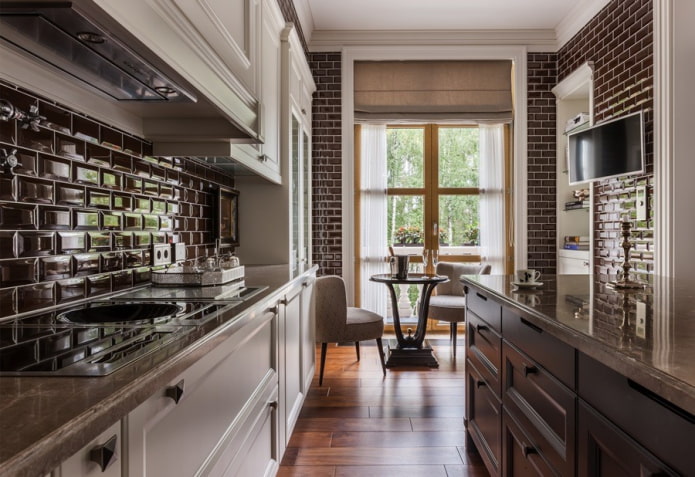
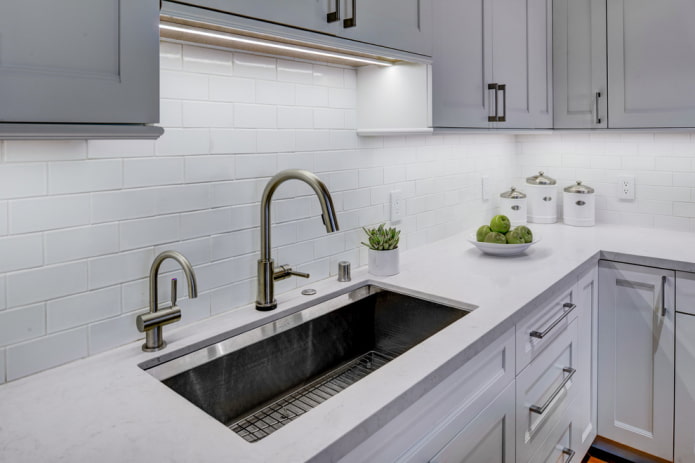
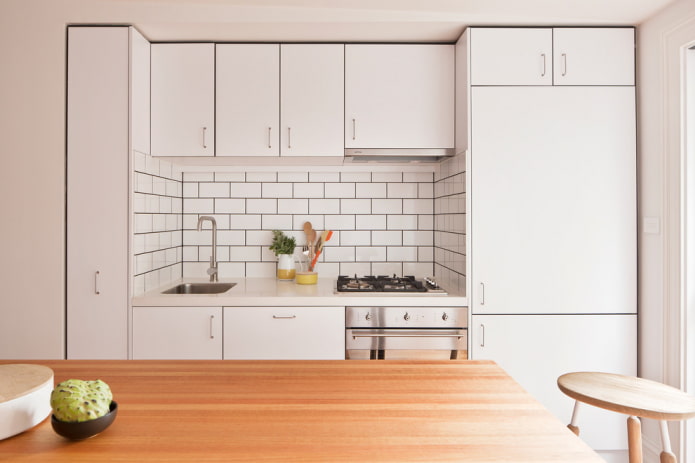
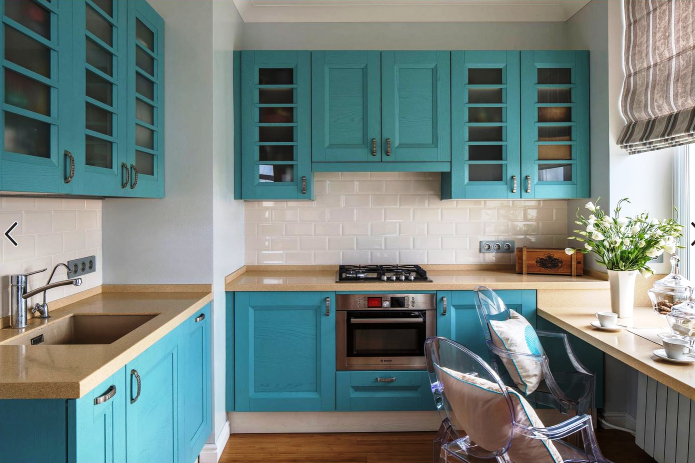
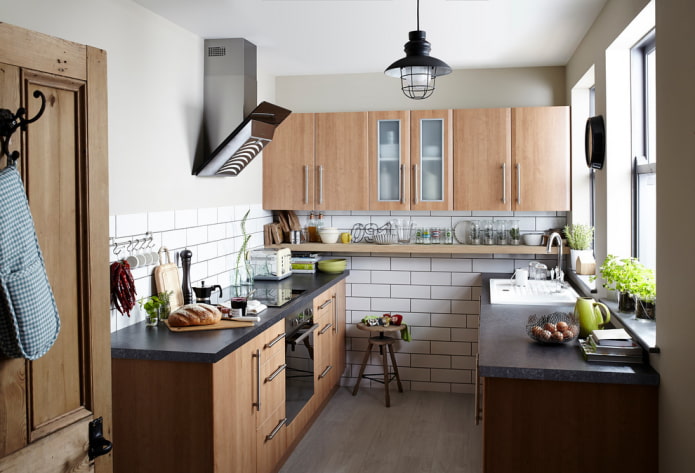
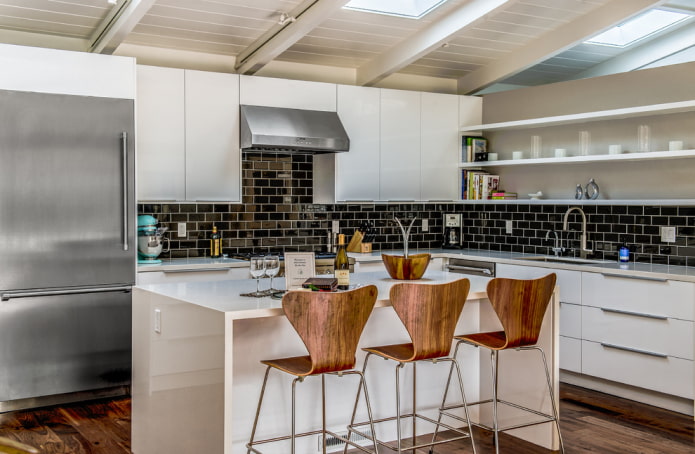
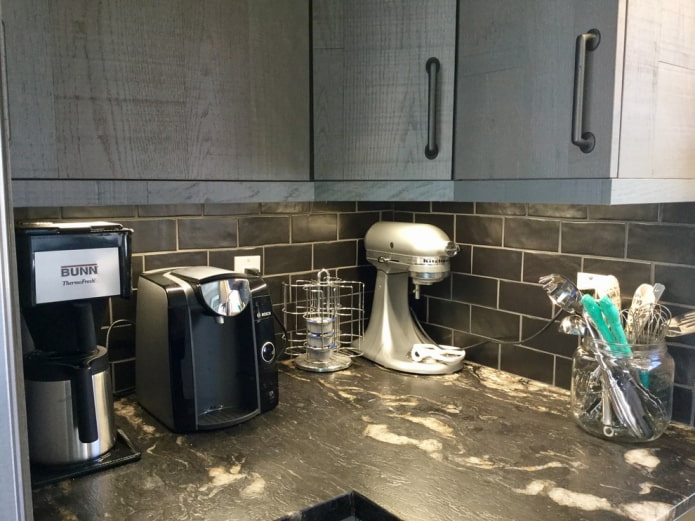
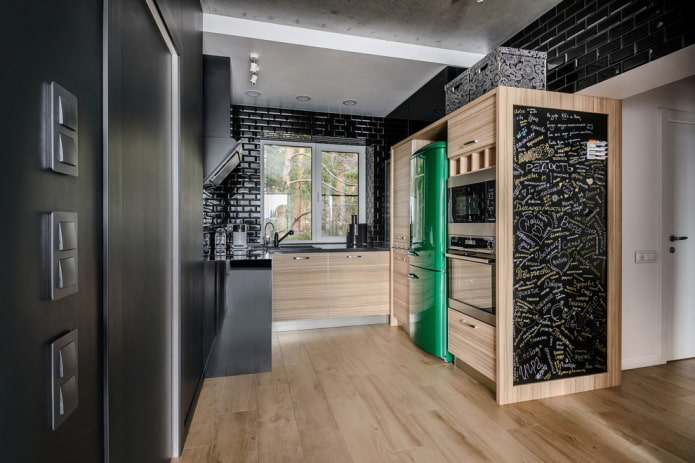
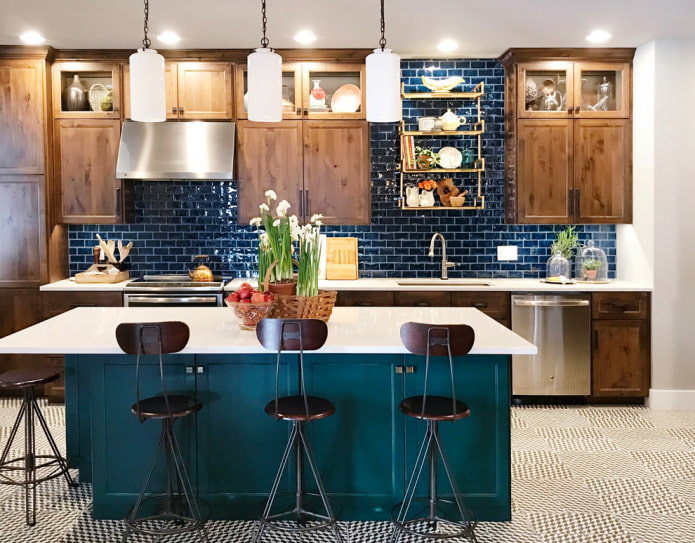
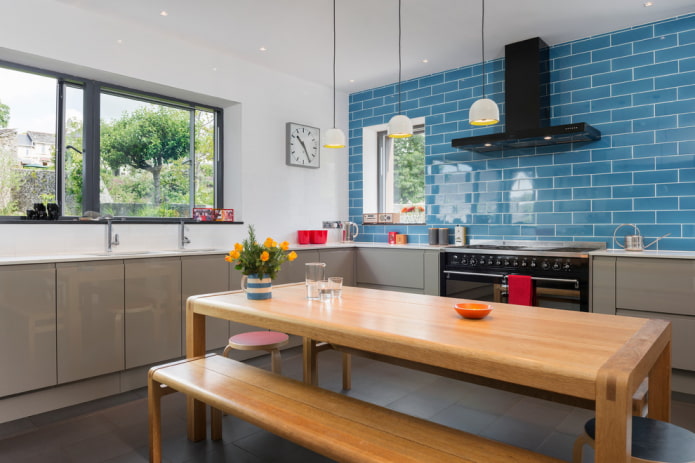
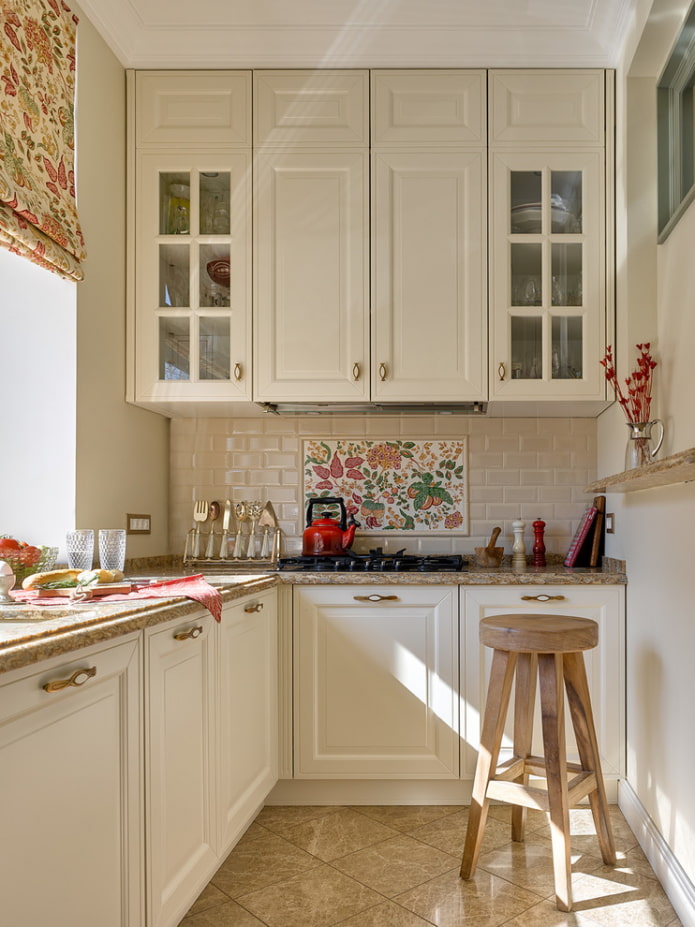


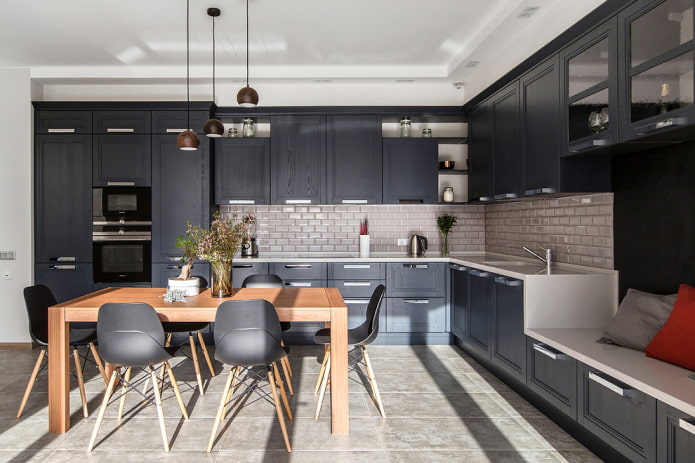
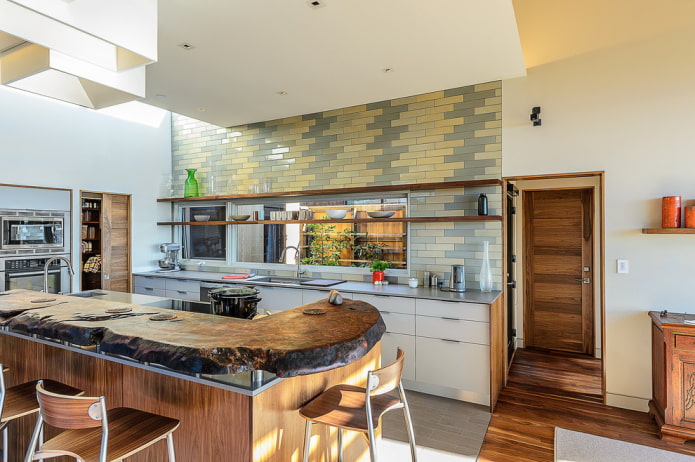
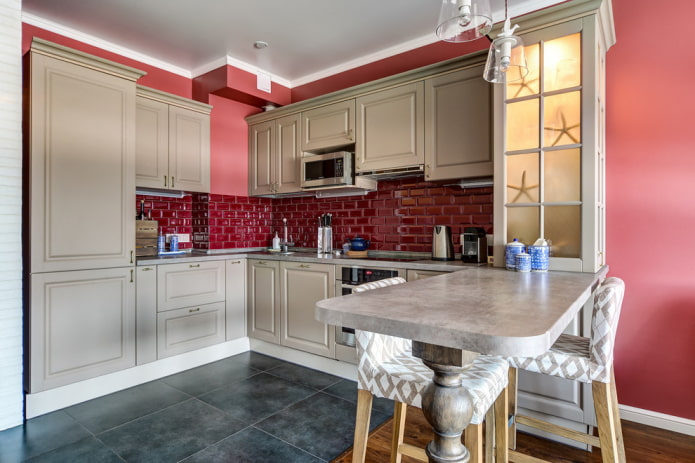
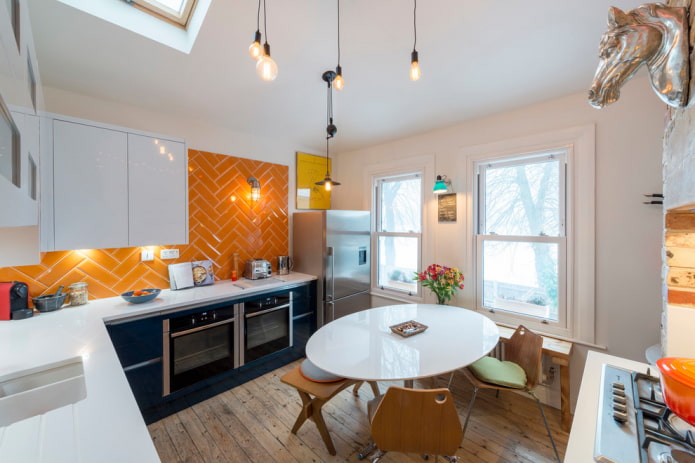
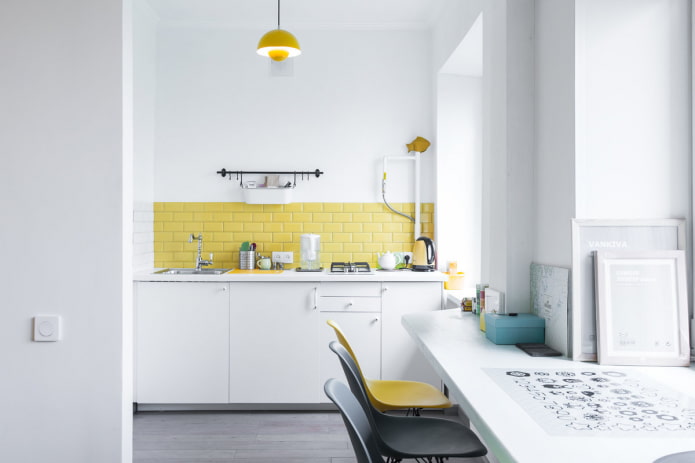

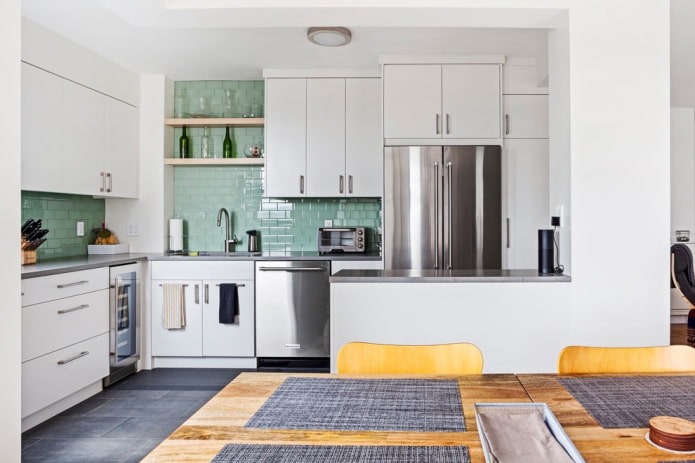



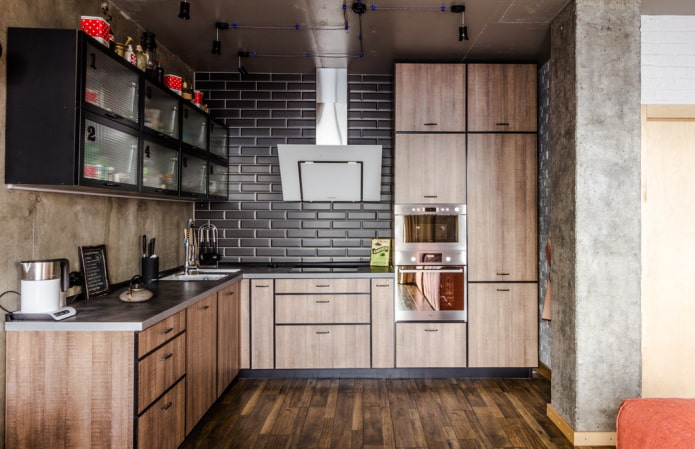
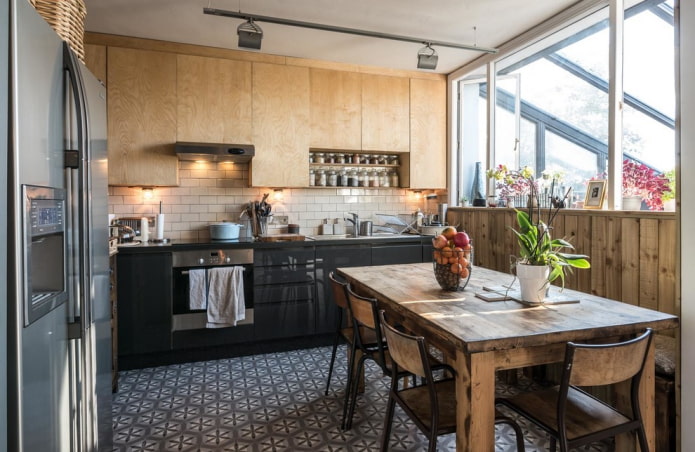

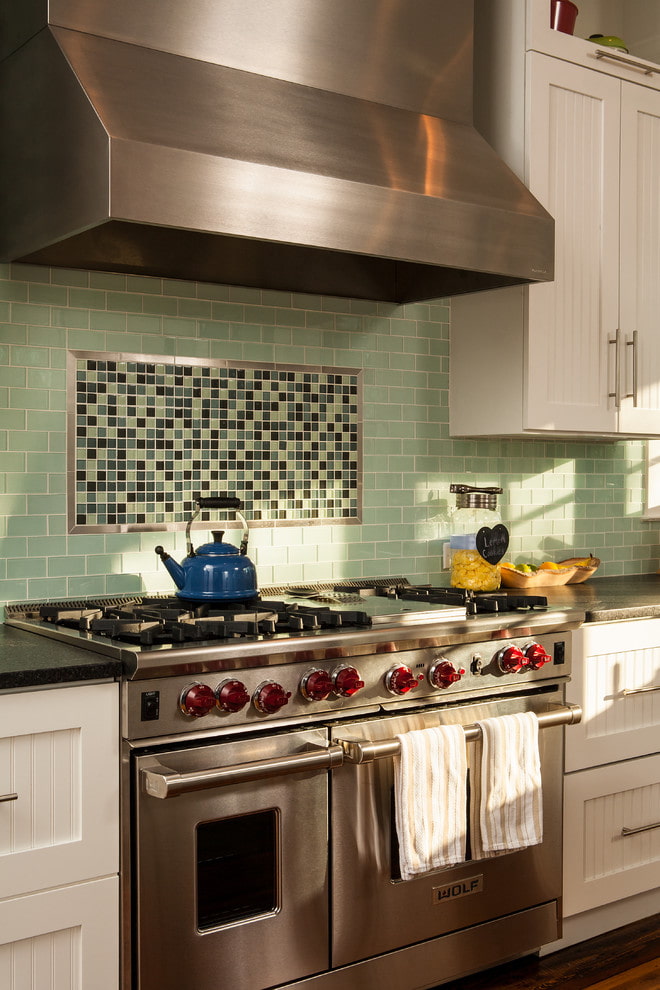
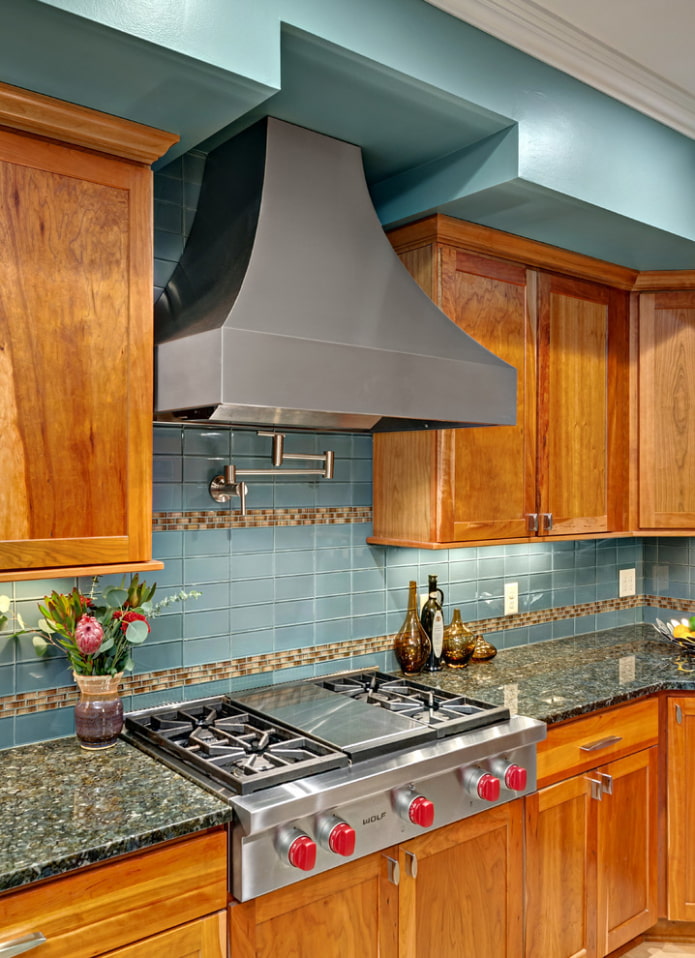
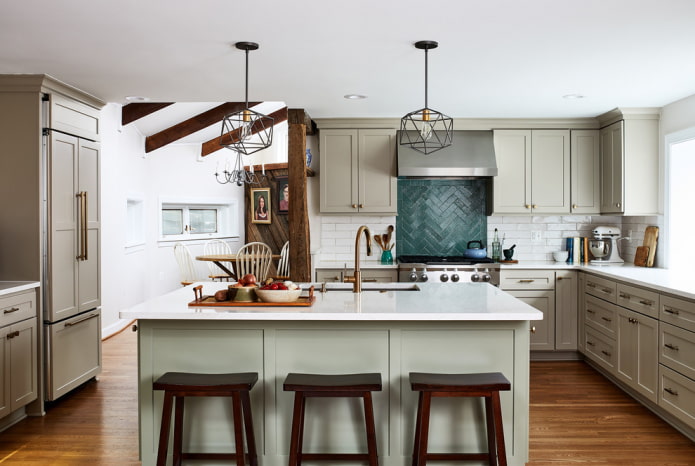
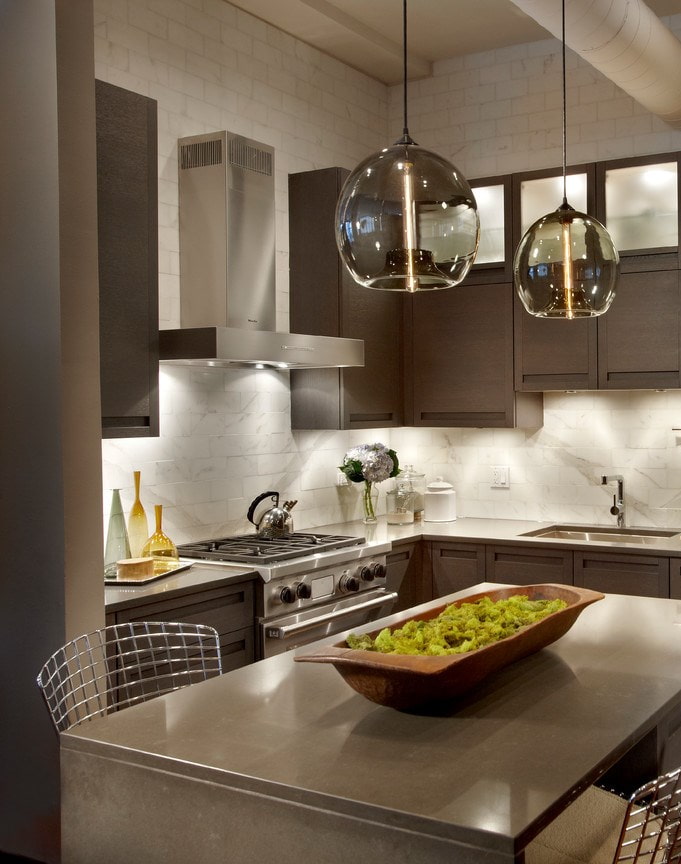
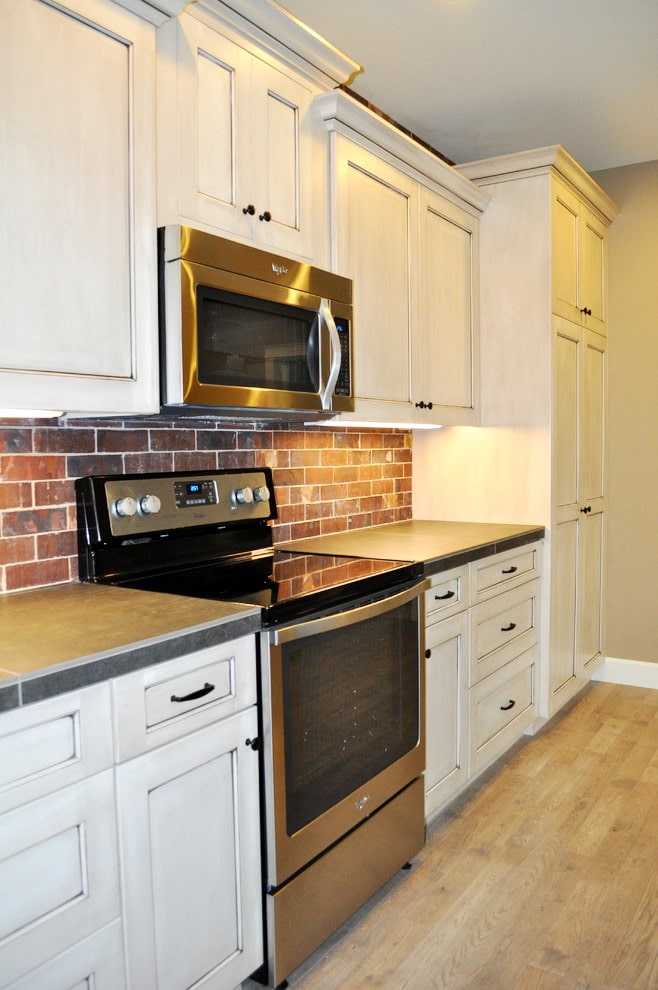
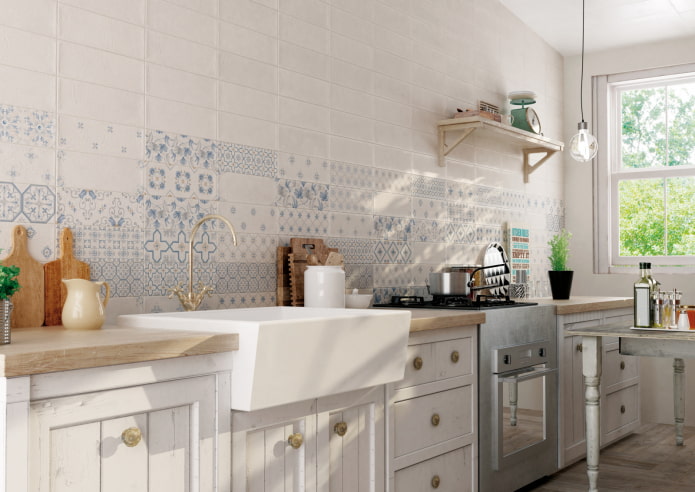
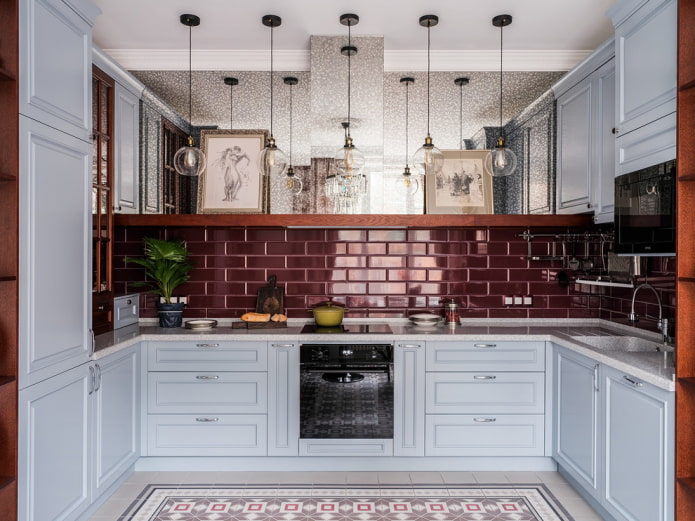
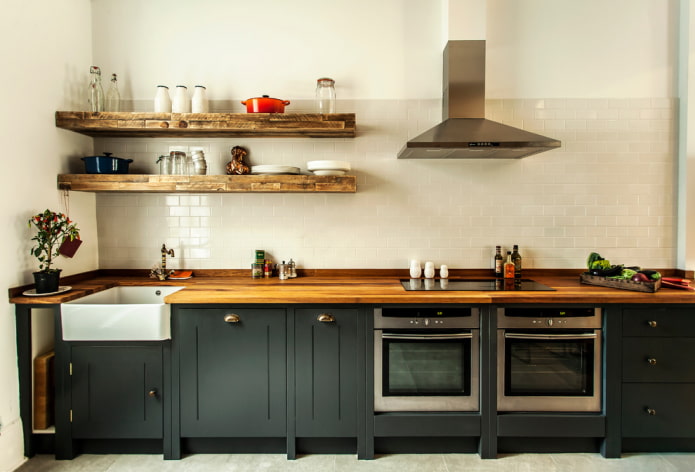
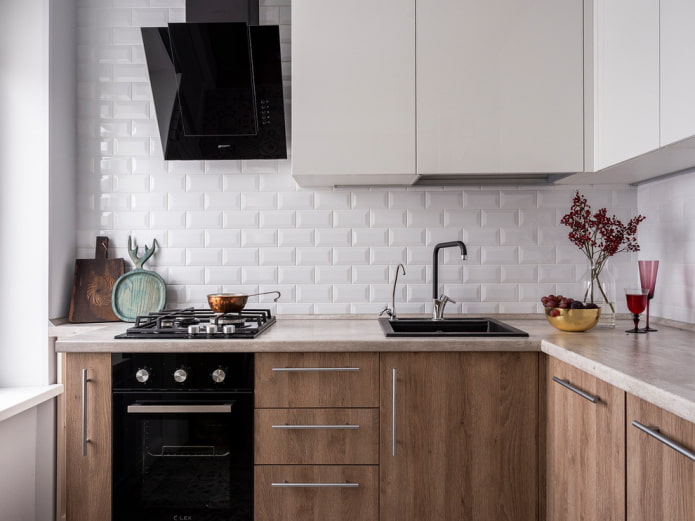
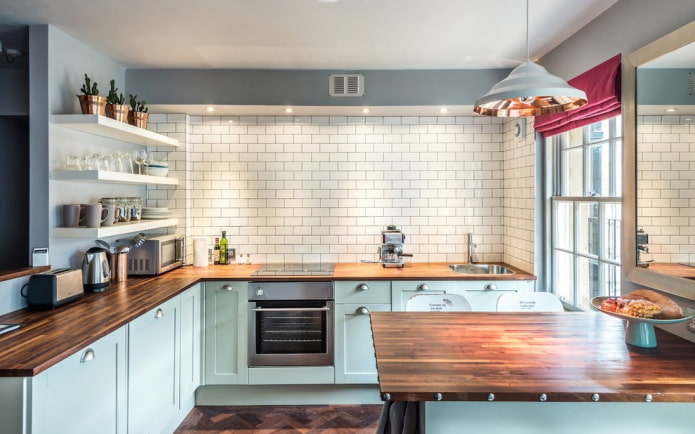

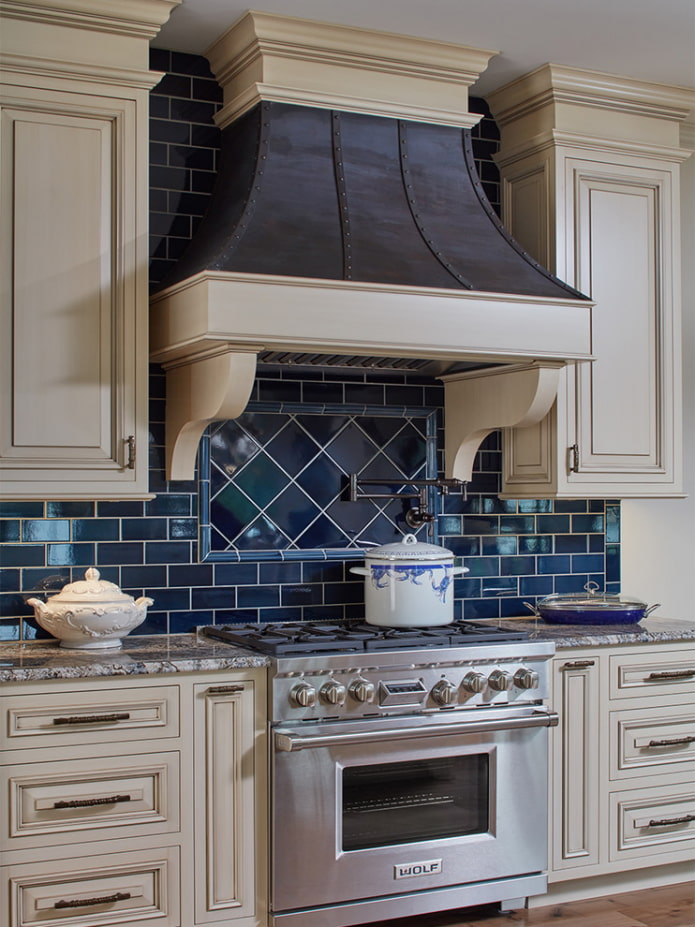
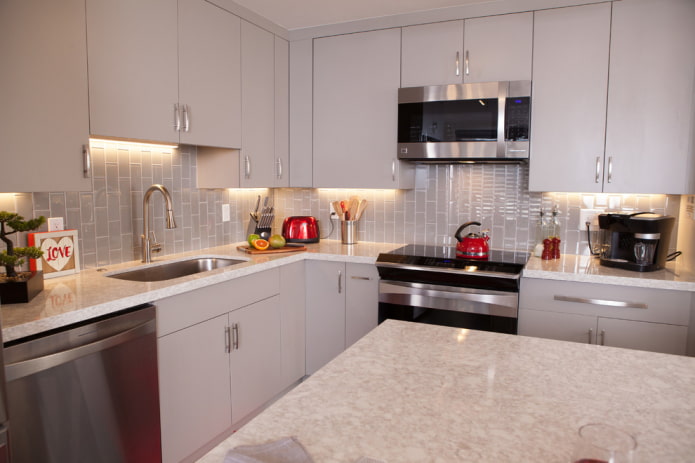
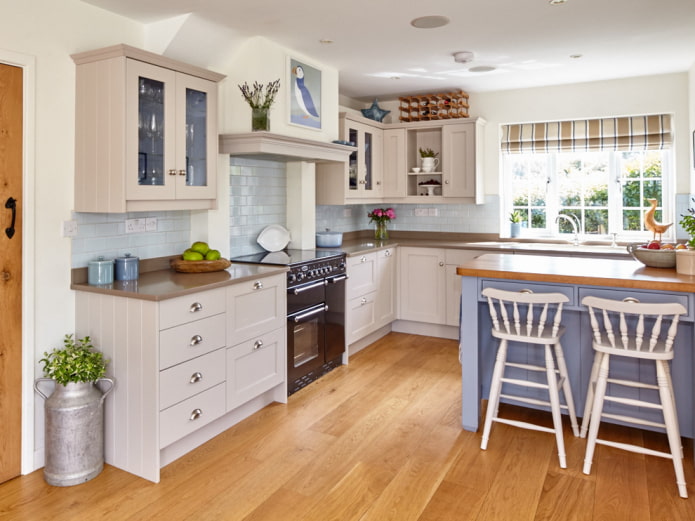
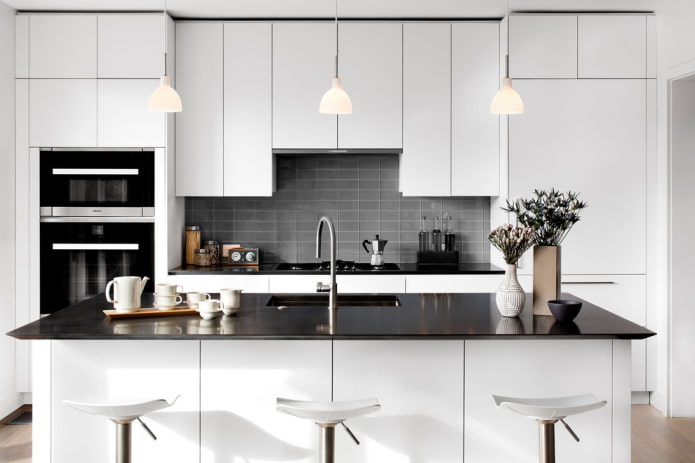
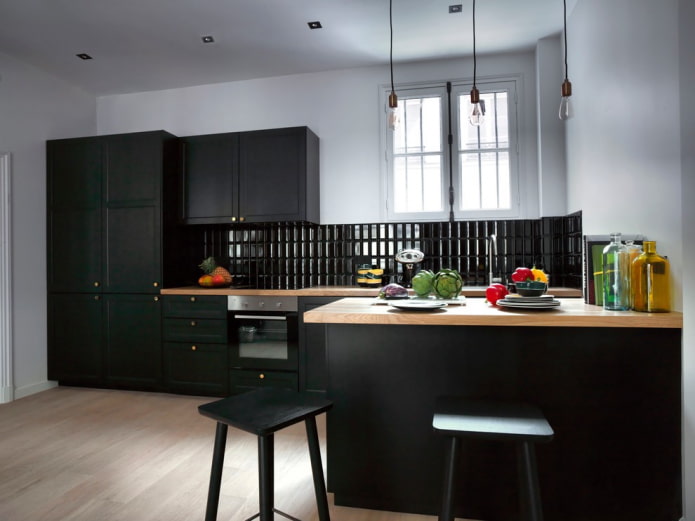

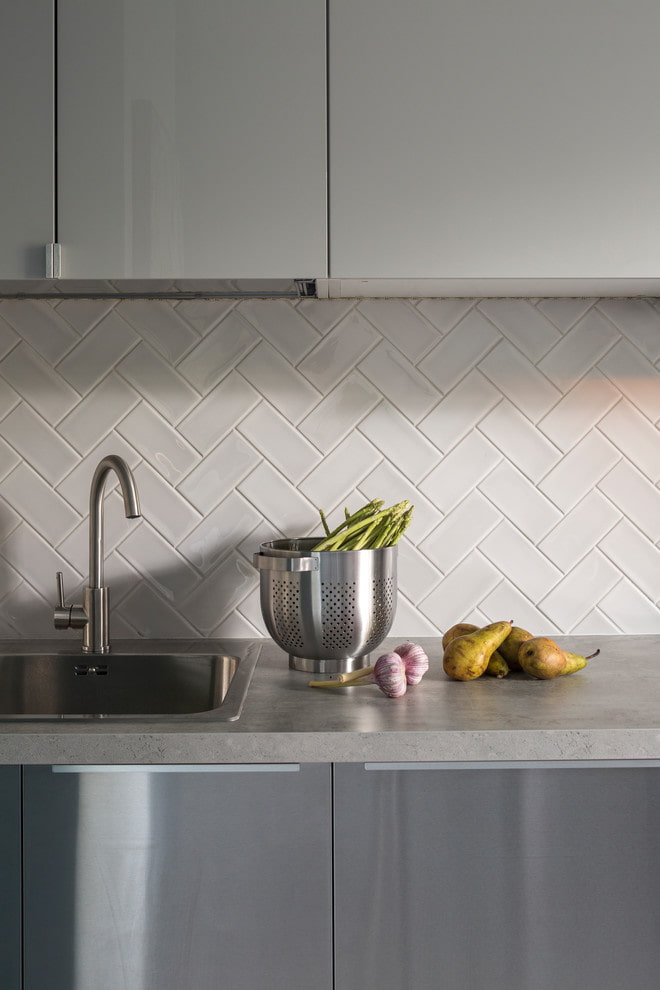


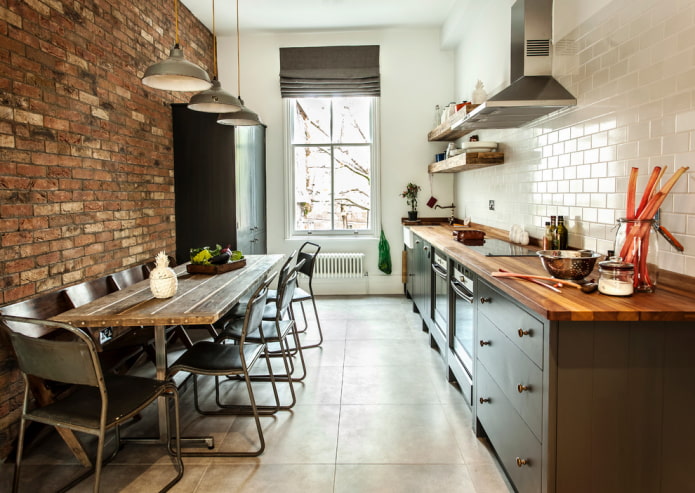

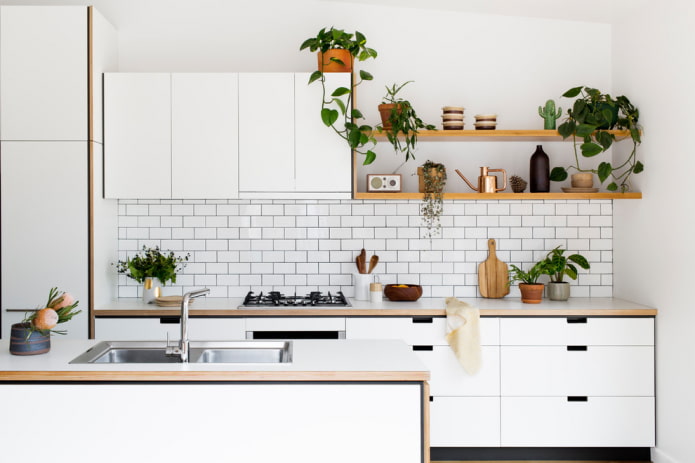
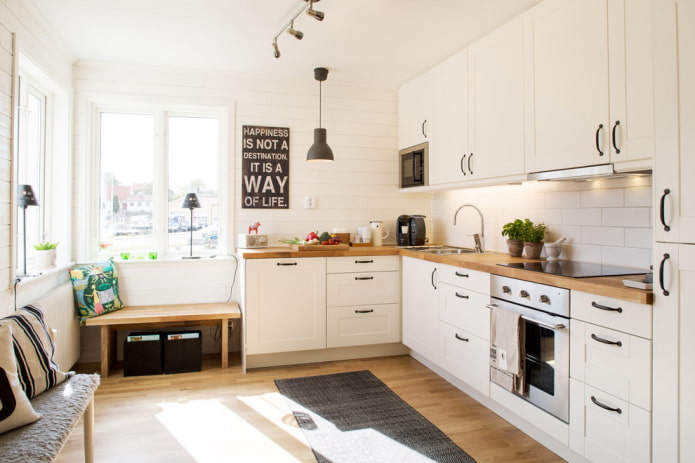

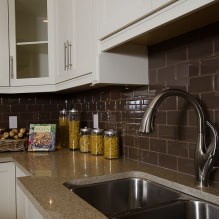
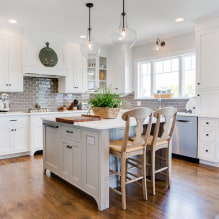
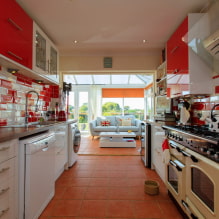





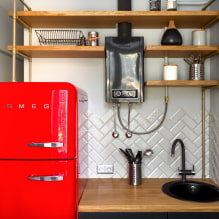

 How to choose the color of the sink for the kitchen?
How to choose the color of the sink for the kitchen? White kitchen: features of choice, combination, 70 photos in the interior
White kitchen: features of choice, combination, 70 photos in the interior Black suite in the interior of the kitchen: design, choice of wallpaper, 90 photos
Black suite in the interior of the kitchen: design, choice of wallpaper, 90 photos Modern design ideas for curtains for the kitchen - we make out the window stylish and practical
Modern design ideas for curtains for the kitchen - we make out the window stylish and practical Wallpaper design: 65 photos and ideas for a modern interior
Wallpaper design: 65 photos and ideas for a modern interior Design of a white kitchen with a black countertop: 80 best ideas, photos in the interior
Design of a white kitchen with a black countertop: 80 best ideas, photos in the interior